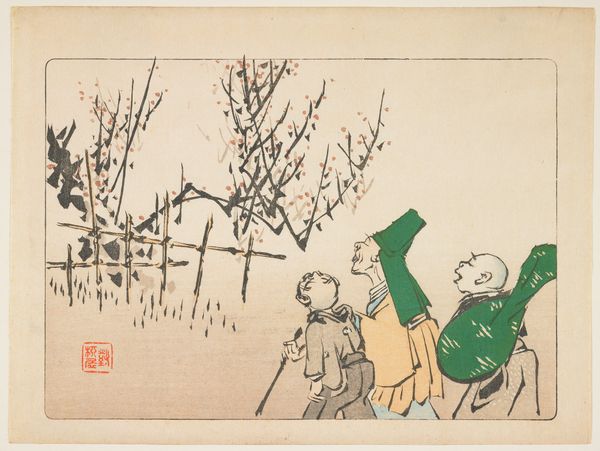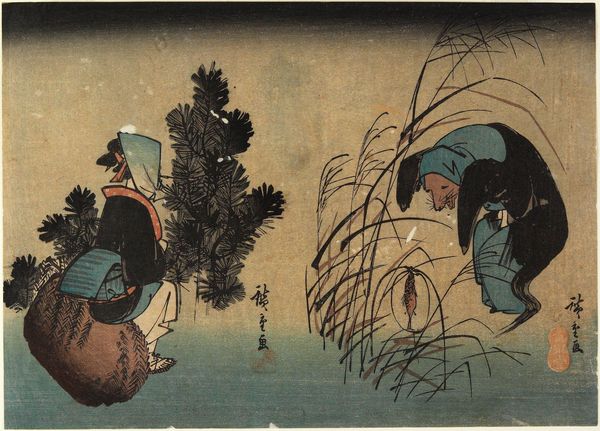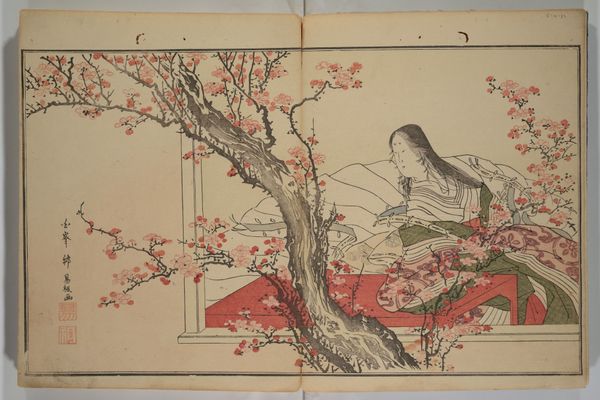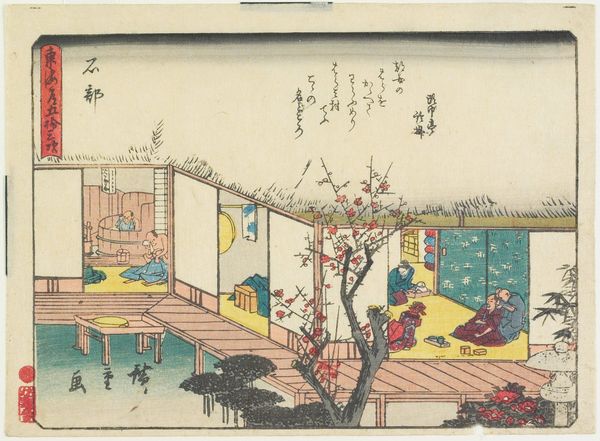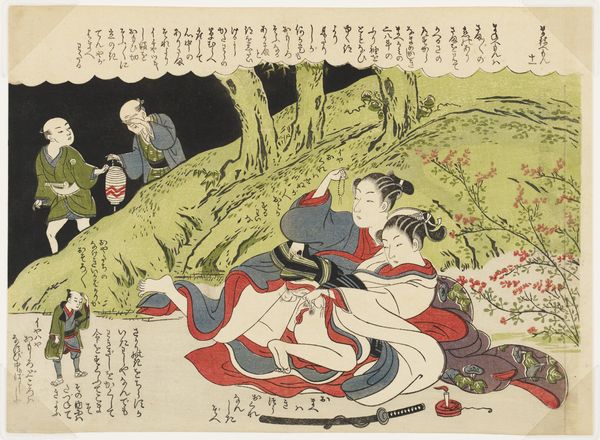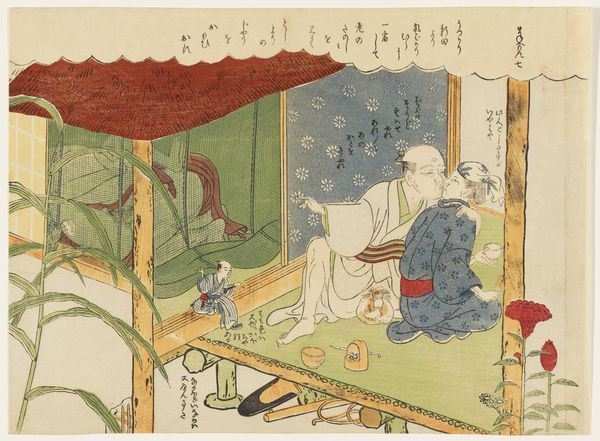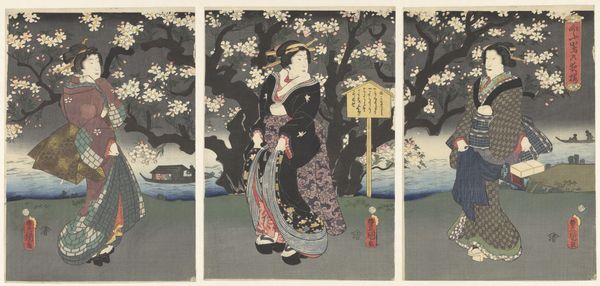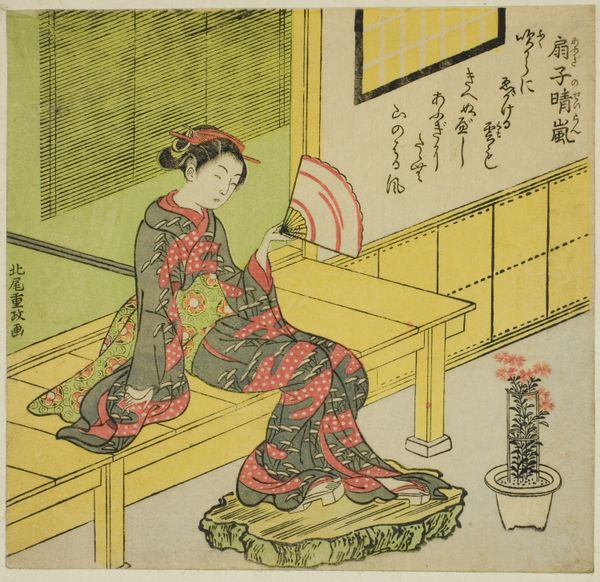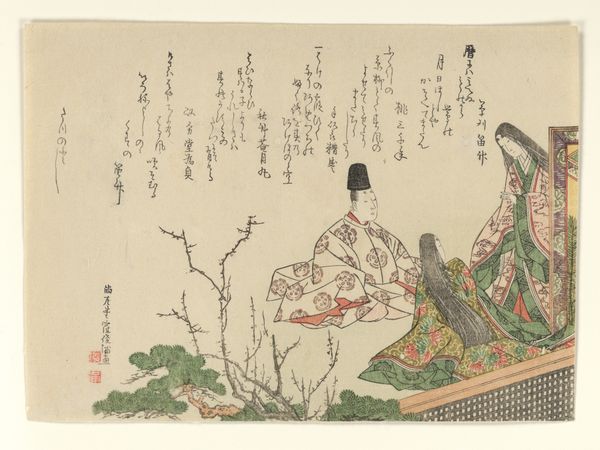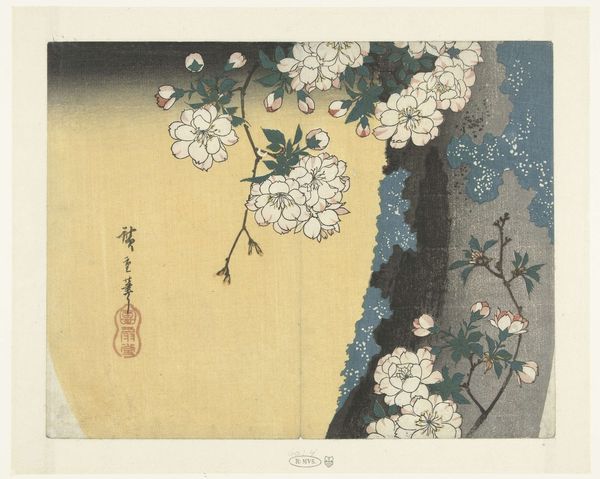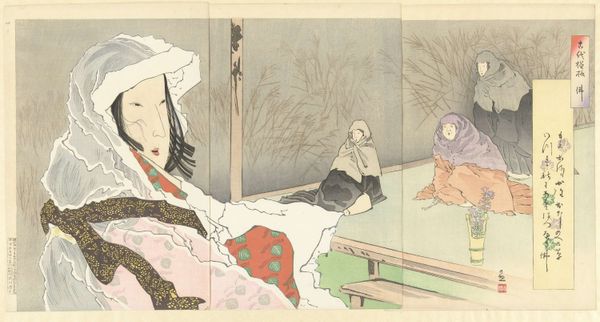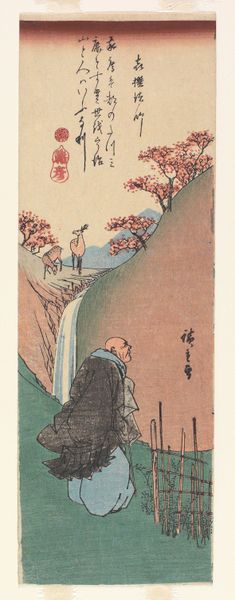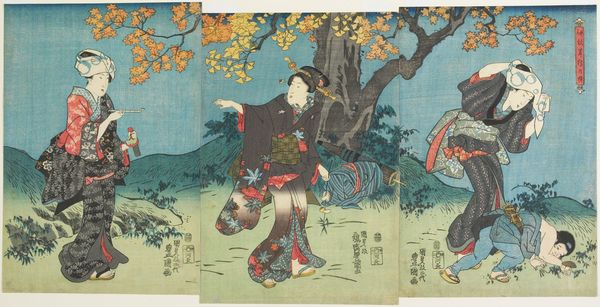
Two Pilgrims Gazing at a Tree Festooned with Prayers 1807 - 1891
0:00
0:00
tempera, print, woodblock-print
#
tree
#
tempera
# print
#
asian-art
#
landscape
#
ukiyo-e
#
figuration
#
woodblock-print
Dimensions: Image: 7 1/2 × 10 1/8 in. (19.1 × 25.7 cm) Mat: 15 1/4 × 22 3/4 in. (38.7 × 57.8 cm)
Copyright: Public Domain
Curator: Here we have Shibata Zeshin's "Two Pilgrims Gazing at a Tree Festooned with Prayers," made sometime between 1807 and 1891. It's a woodblock print in the Ukiyo-e style, currently housed at the Metropolitan Museum of Art. Editor: Immediately, I'm drawn to the materiality. Look at the flat planes of color and how they create such a simplified space. It feels less like looking at a scene and more like observing layers of carefully applied pigments on paper. Curator: Precisely. It’s the labor-intensive nature of the medium – the carving, the inking, the careful registration of each block – that brings us closer to the spiritual aspect of the image. The repetitive nature of the printmaking mirroring the repetitive prayers. Editor: Interesting point! And that repetitive nature emphasizes the process and how Ukiyo-e democratized art production, making it accessible and consumable to the masses. Even the very specific prayers would become commodities in a spiritual sense, attached to this single, central tree, reproduced across an entire community and likely further beyond, almost mechanically. Curator: Right. And think about the weight of each of those prayers on those slender branches! To me, it feels incredibly hopeful but there's a vulnerability in seeing these intimate hopes and anxieties displayed so openly, almost offered to the wind. The tree acts as a fulcrum between the earthly and the spiritual. Editor: I also see tension between craft and high art. Zeshin’s attention to materials and printmaking, elevates what was, at that time, largely seen as a common practice. Curator: Zeshin often blurred such distinctions, imbuing everyday scenes with such personal meaning. There’s a humility in the composition – the figures aren't heroic, but just... present. Witnessing, hoping. Editor: In the context of labor, both material and spiritual, there is something powerful in the mundane acts of witnessing, making, and selling prayers in woodblock form. Curator: Absolutely. It’s a potent reminder of the connection between the physical world and our yearning for something beyond it, even when articulated through accessible methods and modest materials. Editor: Seeing the print this way invites new considerations for contemporary art production and what constitutes preciousness through skill and method.
Comments
No comments
Be the first to comment and join the conversation on the ultimate creative platform.
